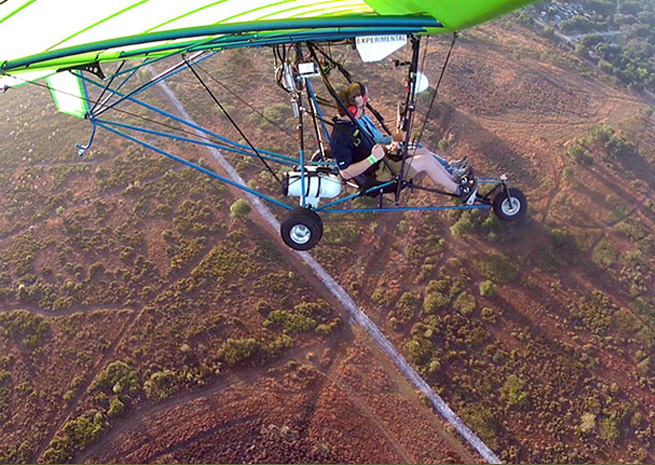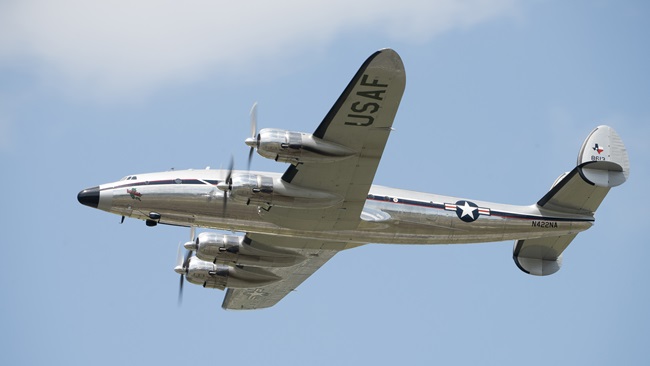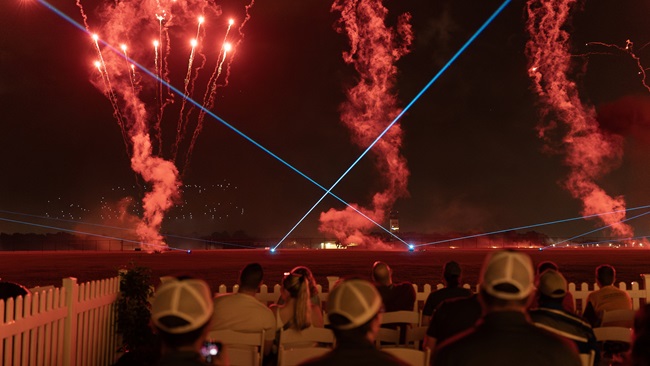The preflight briefing includes a cautionary note about camera placement: A little off-center is best, lest dewdrops and grass blades from the nosewheel pepper the lens.
Check.
Oh, and empty pockets are best—there’s a good chance they’ll wind up that way, one way or another.
Seatbelts, always essential, take on a new level of obvious importance in a Quicksilver Sprint. The seats are canted in a comfortable recline, but as exposed as can be to the elements. April 10 at the Sun ’n Fun International Fly-In & Expo was a good day to fly, severe clear with a gentle breeze just strong enough to push hot air balloons clear of the turf for departure. A general aviation pilot with a logbook full of Cessna and Piper time cannot help but think of Orville and Wilbur Wright and other pioneers who let it all hang out there. This is life in the wind, powered flight at its most elemental.
A Hall wind gauge—a plastic graduated cylinder with a small opening at the bottom and a red disk inside that reluctantly lifts alive, edging past 20 and 30 mph as Eugene “Bever” Borne II rotates the nose. (Borne pronounces that nickname like the animal, with a Cajun bayou drawl, but spells it without the “a.”) The mains clear the turf for a smooth liftoff, the craft’s fabric wings taking on the weight of two men, an engine, and little else.
Lakeland Linder Regional Airport passes slowly below, and a steady thrum from the engine inches behind the seat is dulled by headsets, no louder than a Cherokee cockpit despite the lack of structure separating man and machine. The two pilots agree this may be the best way to fly.
Quicksilver Aeronautics Sales Manager Todd Ellefson said the Sport IIS, similar in appearance to the Sprint used for this flight, retails for $22,800 as a kit that requires 100 hours to build (perhaps less, if the buyer has a little experience building airplanes). The light sport aircraft version will be officially unveiled at EAA AirVenture in Oshkosh, Wis., in July, when the price will be set—a price likely to compete with even a well-used Cessna 152.
“We’re about 60 percent done,” Ellefson said of the effort to convert this larger-than-kite kit into an aircraft that can be flown away from the Temecula, Calif., factory, or trailered behind a small sedan. Quicksilver’s GT 500, slightly larger, with a “cabin” that includes large side panels that can be unzipped and removed in a few minutes if the mood and weather suit, retails for about $50,000 as a kit, and will be the second model converted to light sport production, Ellefson said.
“It’s going to offer flight training to people on the entry end of aviation, again,” he said.
Quicksilver created the Sport II about five years ago, a strut-braced version of the cable-braced Sprint flown in Lakeland. The wings of the Sport, Quicksilver’s most popular model, are covered top and bottom, instead of just on top, but the aircraft are similar at their soul. The Sprint putters along at 38 mph. It stalls at a little less than that, with nothing more than a subtle pitching motion as the critical angle of attack is passed.
Turns are a bit nontraditional, best accomplished with rudder nearly alone. The pusher propeller spins just a few feet from the fabric-covered rudder, which is large (in relative terms), and the wings bend upward from the center in a pronounced dihedral.
“It makes a good photography airplane,” Borne said. “You can do all of your work … and then you can use your feet to get you where you want to go.”
While this short introductory flight leads the newbie (having spent the last 200 hours in a Piper Warrior) hopelessly cross-controlled, knowing it, yet unable to resist the ingrained urge to reduce overbank with the stick (claxon horns inside the mind warning that this is not the sort of thing one does at 400 feet above the ground.)
Borne appears completely unconcerned by this, his feet dangling in the breeze. Curiosity about stalls is expressed (having handed control back to the accomplished salesman), and Borne dutifully lifts the nose and reduces power. There is no buffet, no break, no nothing, really: a slight downward pitch, and back to flying, with barely any altitude lost.
The only thing that appears to concern Borne is a proliferation of powered parachutes launching from the turf below, amidst an inability to raise air traffic controllers with the handheld radio lashed to a metal tube that forms what might be thought of as a “cockpit,” though the word itself seems too substantial to describe a pair of seats perched over wheels and underneath a wing.
Borne declares it will be a steep approach, though it looks about normal—a Super Decathlon would approach the field at a steeper angle with power still on. All appears to be clear, and soon the wheels kiss the grass. It also could have been a lake, or pond—Ellefson noted there are floats available for every model in the line, though the Sport IIS is best suited for water. Prices start at about $13,000 for a single-seater, and top out around $50,000 for the GT 500 kit.
This is flying for flying’s sake, for no better reason than to watch the world go by, and do so in no particular hurry.









